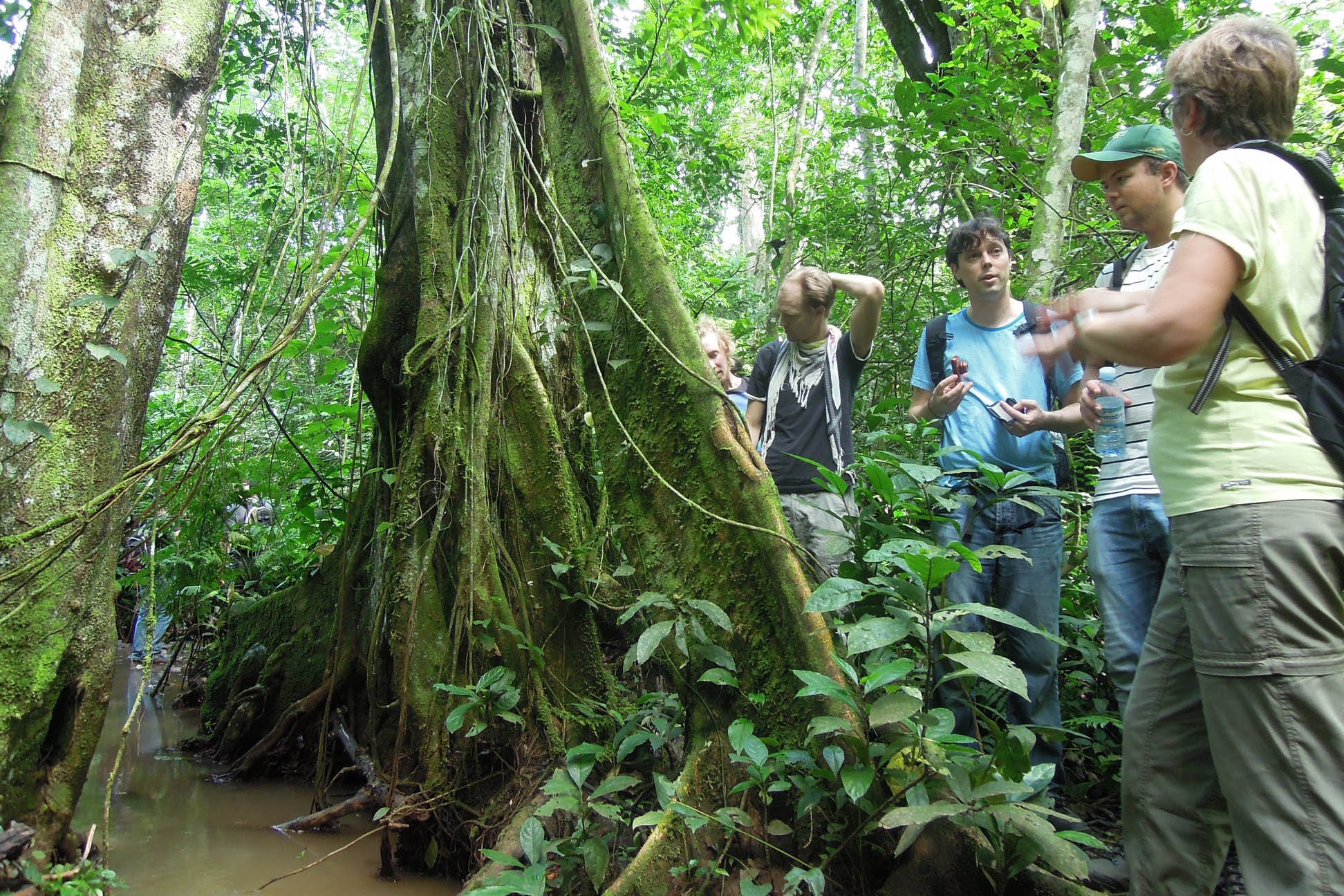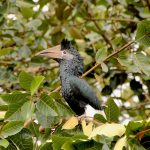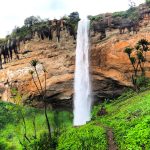Mabira Central Forest Reserve: A Sanctuary of Biodiversity and Cultural Heritage
Mabira Central Forest Reserve | Forests of Uganda. Nestled in the heart of Uganda, Mabira Central Forest Reserve stands as a testament to the rich tapestry of biodiversity and cultural heritage that defines this East African nation; Spanning over 300 square kilometers, this lush expanse of tropical rainforest has captivated the imaginations of scientists, nature enthusiasts, and adventurers alike for generations.
Biodiversity Flourishing Amidst Green Canopies.
At first glance, Mabira Central Forest Reserve appears as a dense green canopy, but within its depths lies a treasure trove of flora and fauna; The forest is home to over 300 species of birds, including the iconic Great Blue Turaco with its striking plumage and melodious calls that echo through the trees; Rare primates such as the Ugandan mangabey and red-tailed monkey swing gracefully from branch to branch, while elusive forest elephants leave subtle traces of their presence, reminding visitors of the forest’s ancient and majestic nature.
The flora of Mabira is equally captivating, with towering mahogany and ironwood trees dominating the canopy, their roots intertwined with a myriad of ferns, orchids, and medicinal plants. The forest floor is a carpet of vibrant undergrowth, with delicate mushrooms and fungi adding to the ecosystem’s intricate balance.
Conservation Efforts and Challenges.
Despite its ecological significance, Mabira Central Forest Reserve has faced numerous challenges over the years. Encroachment for agriculture, logging, and infrastructure development has threatened the integrity of this vital ecosystem. However, thanks to the dedicated efforts of conservationists, government agencies, and local communities, significant strides have been made in preserving and restoring Mabira’s natural beauty.
Community engagement plays a crucial role in conservation efforts, with initiatives focusing on sustainable livelihoods, eco-tourism, and environmental education. Local communities are actively involved in reforestation projects, wildlife monitoring, and eco-friendly agricultural practices, fostering a sense of stewardship and ownership of their natural heritage.
Cultural Significance and Traditional Knowledge.
Beyond its ecological value, Mabira Central Forest Reserve holds profound cultural significance for the surrounding communities. Indigenous peoples, such as the Baganda and Basoga, have a deep-rooted connection to the forest, considering it a sacred space intertwined with their spiritual beliefs and traditional practices.
The forest is not only a source of livelihood through non-timber forest products but also a repository of traditional knowledge passed down through generations; Local healers utilize medicinal plants found in Mabira to treat various ailments, highlighting the intrinsic link between biodiversity and human well-being.
Challenges and Future Prospects.
While conservation efforts have made significant progress, Mabira Central Forest Reserve still faces ongoing challenges. Pressures from agricultural expansion, illegal logging, and climate change continue to threaten its ecological balance. Sustainable solutions that balance conservation with community needs are essential for ensuring the long-term viability of this critical ecosystem. Mabira Central Forest Reserve | Forests of Uganda
Looking ahead, there are promising prospects for Mabira’s future. Increased eco-tourism initiatives, coupled with sustainable development practices, can generate revenue while preserving the forest’s integrity. Continued research and monitoring will enhance our understanding of Mabira’s biodiversity, supporting informed conservation strategies.
Visiting Mabira Central Forest Reserve: A Journey Into Nature’s Splendor.
For those fortunate enough to visit Mabira Central Forest Reserve, it is an immersive experience unlike any other. Guided nature walks reveal the forest’s hidden wonders, from rare bird sightings to encounters with elusive wildlife. Canopy tours offer a unique perspective, allowing visitors to glide through the treetops and witness the forest’s vibrant life from above.
Eco-lodges and community-run accommodations provide a comfortable and sustainable base for exploration, with opportunities to engage with local communities and learn about their conservation efforts firsthand; Whether trekking through ancient trails, listening to the symphony of forest sounds, or simply basking in the tranquility of nature, Mabira Central Forest Reserve offers a sanctuary for rejuvenation and discovery.
Activities / Things to do in Mabira Central Forest Reserve:
Getting to Know Mabira.
1. Guided Nature Walks.
One of the best ways to immerse yourself in the enchanting beauty of Mabira is by embarking on a guided nature walk. Knowledgeable guides lead visitors along well-maintained trails, sharing insights about the forest’s ecology, pointing out rare plant species, and helping spot elusive wildlife. These walks offer a serene and educational experience, perfect for anyone looking to reconnect with nature. Mabira Central Forest Reserve | Forests of Uganda
2. Canopy Zip-lining Adventure.
For the more adventurous souls, Mabira offers an exhilarating canopy zip-lining experience. Soar through the treetops and witness the forest from a bird’s eye view as you zip from one platform to another; This activity not only provides an adrenaline rush but also allows participants to appreciate the forest’s grandeur and biodiversity from a unique perspective.
3. Bird Watching Expeditions.
Bird enthusiasts will find Mabira Central Forest Reserve to be a paradise brimming with avian wonders. Join a bird watching expedition led by experienced ornithologists to spot a diverse range of bird species in their natural habitat. From colorful sunbirds to majestic raptors, Mabira’s birdlife offers endless opportunities for avid birders to observe and photograph these feathered beauties.
4. Mountain Biking Trails.
For those who prefer a more active adventure, Mabira’s mountain biking trails present an exciting way to explore the forest’s terrain; Rent a mountain bike and traverse designated paths that wind through the forest, offering a thrilling ride amidst towering trees and diverse wildlife. It’s a fantastic way to combine fitness with nature exploration.
5. Picnics and Nature Photography.
Mabira Central Forest Reserve provides serene picnic spots where visitors can relax amidst nature’s tranquility. Pack a picnic basket, unwind by the forest streams or under the shade of ancient trees, and savor the sights and sounds of the forest. Nature photographers will also find endless inspiration in Mabira’s scenic beauty, capturing moments that encapsulate the forest’s allure.
6. Cultural Encounters.
Beyond its natural wonders, Mabira offers opportunities for cultural immersion through interactions with local communities. Engage in cultural tours where you can learn about traditional practices, taste local cuisine, and appreciate the rich heritage of the surrounding villages. These interactions foster a deeper understanding of the symbiotic relationship between the forest and its inhabitants. Mabira Central Forest Reserve | Forests of Uganda
Conservation and Sustainability Efforts
As you partake in the activities Mabira has to offer, it’s essential to remember the importance of conservation and sustainable tourism. The forest faces threats from deforestation and habitat loss, making responsible tourism practices crucial for its preservation. Support local conservation initiatives, minimize your ecological footprint, and leave the forest as pristine as you found it to ensure future generations can continue to enjoy its wonders.
Remarks: – Mabira Central Forest Reserve | Forests of Uganda
In conclusion, Mabira Central Forest Reserve stands as a beacon of hope for biodiversity conservation and sustainable coexistence between humans and nature; Its rich tapestry of life, cultural heritage, and ecological significance reminds us of the invaluable treasures found within our natural world; As we strive to protect and preserve places like Mabira, we not only safeguard our planet’s future but also nurture our connection to the wonders of life on Earth.








